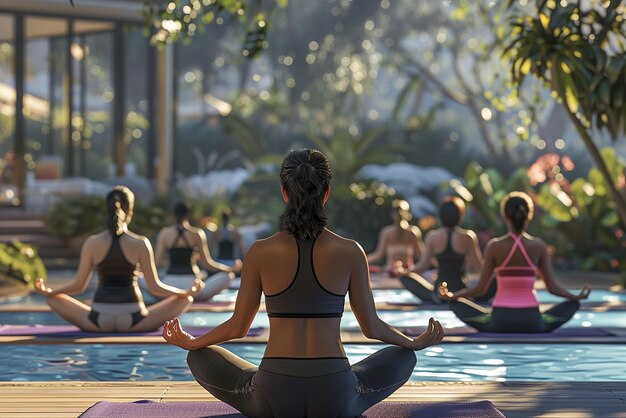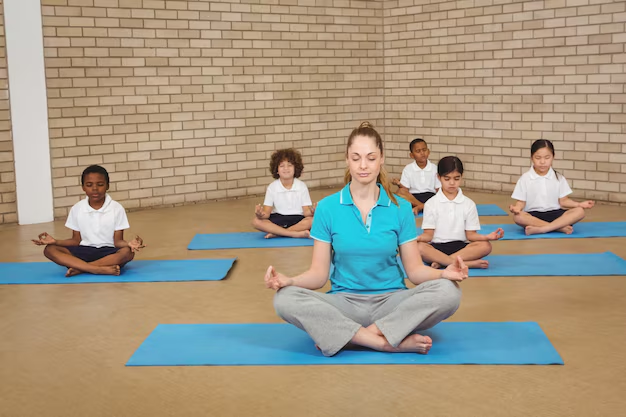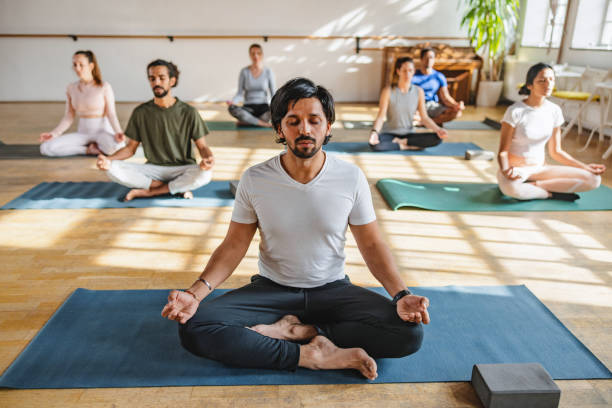
The process of learning how to practice yoga is both very gratifying and enriching for the practitioner. It requires a marriage of principles of leadership, self-development, and selfless service to others. This blog outlines how one can become a yoga practitioner, describing the aspects of training programs, workshops, certification, and the professional development and practices that follow. Whether you are new or you wish to make your step up the ladder, this guide will arm you with such know-how.
What Are The First Steps To Become A Yoga Practitioner?
The first steps include practicing regularly, studying yoga philosophy, and finding a reputable teacher training program. Creating a regular personal practice is very important. To enhance your own practice the first step is to practice asana through attending classes and self-study. Mastering some of the basic concepts of yoga, for example, the Eight Limbs of Yoga will ease your path.
After that, search for and enroll in a Yoga Alliance-approved teacher training program that you think suits your aspirations and principles. This program will target all the essential issues that teach effective yoga. More practice coupled with theoretical teaching forms a solid base which is critical to your success in yoga practice.
What are the Education Qualifications Required to be a Certified Yoga Instructor?
In order to become certified, it is common that a student should first take a 200-hour training program that is registered with the requisite Yoga Alliance. Some advanced credentials require more training hours and specific knowledge. The 200-hour course is intended to address the fundamental knowledge that one ought to acquire regarding various topics such as anatomy, teaching skills, and yoga philosophy. It will then be possible to apply for a 200-hour Registered Yoga Teacher certification, upon meeting criteria.
Advanced levels training includes deeper or specialization of practices the 300-hour and 500-hour programmes. These are courses that will enhance one’s education and in most cases center on certain styles or therapeutic yoga instead of general yoga teaching. Continued learning and practicing the approved code of ethics of Yoga Alliance is often an endorsement requirement.

How to choose the right yoga teacher training program?
To choose the right yoga teacher training program you need to look for the reviews, syllabus, teaching qualifications, and the accreditation of the program. Furthermore, focus on your objectives and consider what style of yoga suits you best. Start by understanding your end objectives, whether you have to deepen the practice for yourself, help others, or master one specific style.
Programmes accredited by the Yoga Alliance include comprehensive studies in where anatomy, philosophy or methodology of teaching are concerned. Look into the profiles and teaching organizations the main instructores of the trainings have taught in. Many different options are more than likely when it comes to information session, talking on the phone, or meeting somebody from previous groups.
What Are the Basic Skills That a Yoga Professional Should Have?
Other relevant skills include appropriate communication, deep knowledge of the principles of yoga, and the ability to become adaptive according to the needs of the students. Mindfulness and empathy are key in this regard. As a professional in yoga, one needs to clearly and effectively guide students through various asanas, keeping their safety in consideration.
Knowledge of anatomy and yoga philosophy supports you in offering modifications and meeting diverse skill levels. Further, the presence of mindfulness in your own practice teaches you how to be in the here and now, with a strong response to the needs of your students on a physical and emotional level. It is empathy that helps you create a space where students may enjoy exploring their practice at their own pace.

How much personal practice does a yoga practitioner need?
Personal practice is immensely important in growth and credibility. It will deepen one’s understanding, keep teaching authentic, and magnify one’s ability to lead others. In personal practice, you continue to explore and hone your own yoga journey, informing and inspiring your teaching.
Personal practice allows you to experiment with new techniques, deepen your understanding of the poses, and connect with the philosophy of yoga. This will also set an example for the students you teach, and is an ongoing commitment to your own practice, helping to instill consistency and self-discipline into their practice.
What Are the Career Opportunities for Certified Yoga Practitioners?
Career opportunities include teaching in studios, private sessions, retreats, and therapeutic yoga teaching. Online teaching is one of the fastest-growing prospects these days. You could be working as a certified yoga professional in everything from yoga studios to fitness centers, corporate wellness programs, and healthcare facilities, among many more. Many provide private classes offering personalized experiences to those with particular needs.
Leading yoga retreats or workshops are other ways in which one can share their expertise with a larger group of people. Further specializations, for example in prenatal yoga, yoga therapy, or mindfulness meditation, will also open up newer avenues. With technology advancing, online yoga teaching has also become a valid avenue.
The Key Takeaway
A certified yoga practitioner develops both personally and professionally, and it takes some commitment to practice, study, and further learn continuously. Each step counts; from selecting the appropriate training program to exploring all kinds of career possibilities. This helps in continuing to empower others and also themselves with the transforming power of yoga to cultivate well-being and mindfulness within the community.
